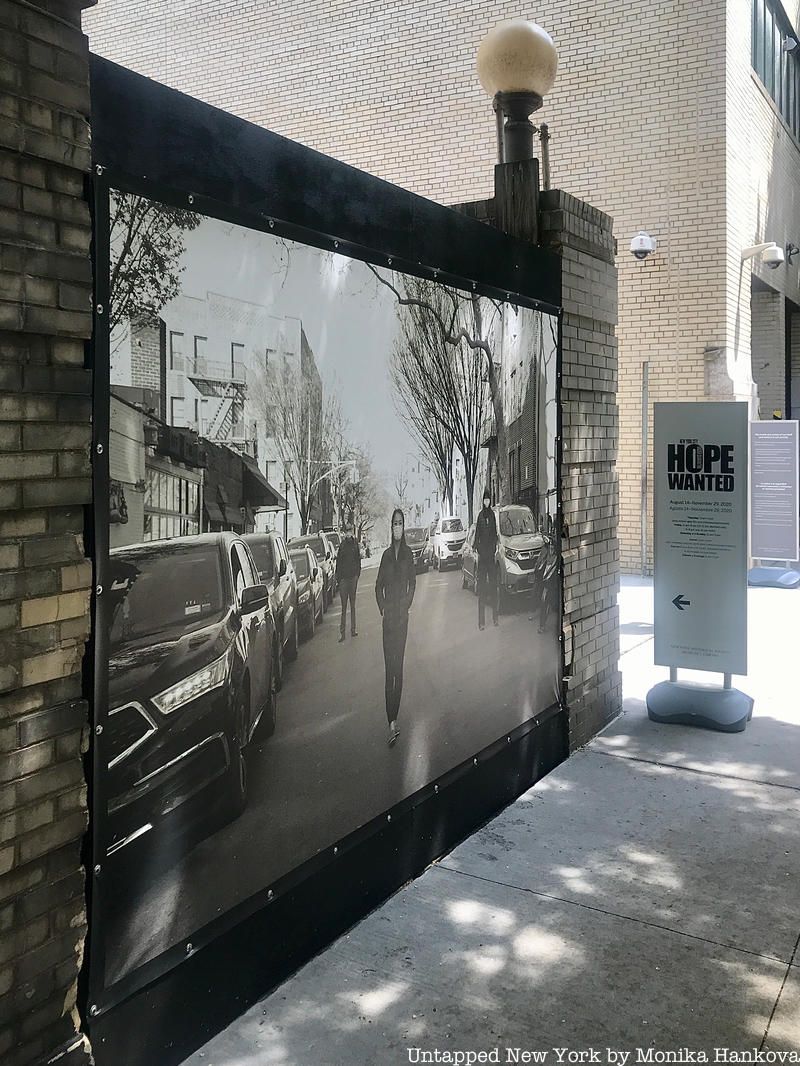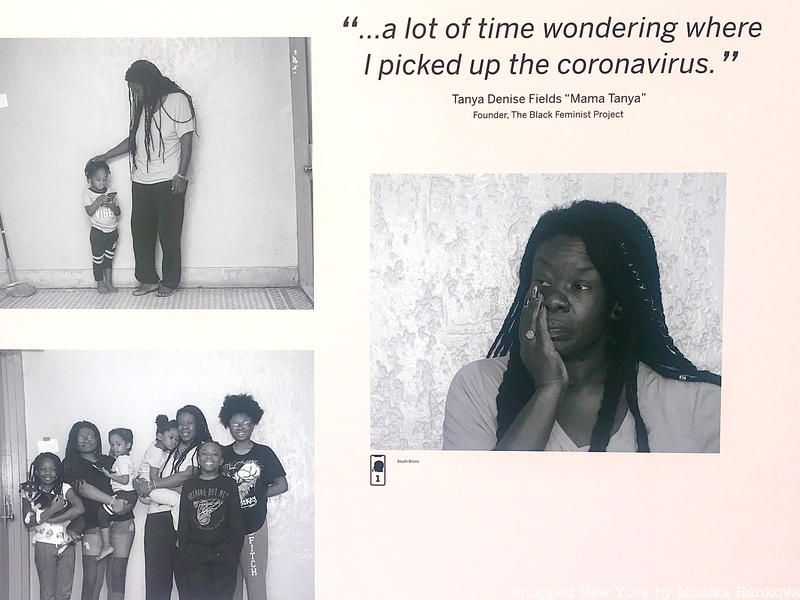100th Anniversary Great Nave Tour at the Cathedral of St. John the Divine
Celebrate the 1925 construction of the stunning nave inside the world's largest Gothic cathedral!


“We saw raw, naked streets; we saw the homeless and essential workers utterly alone. We witnessed a noisy city deafeningly silent. We smelled life, we smelled death, yes, and we also felt the mighty pulse of a city that refuses to lose. This is our record of hope, wanted, for New York, for our world.” – Kevin Powell
New York City museums and other cultural and memory institutions had to close their doors in mid-March at the onset of the COVID-19 pandemic. Nevertheless, according to the last announcement, the low-risk museums will be allowed to reopen at 25% capacity later this month. Yet in the meantime two institutions already partially came back with touching outdoor exhibitions reflecting on the challenging months of the early spring of 2020. This past Friday, August 14, The New-York Historical Society opened its doors to visitors with an outstanding outdoor photo installation, which is capturing the experience of living amid the global deadly pandemic. It is focused on the toughest of times New Yorkers had faced in April, at the peak of the coronavirus.
“Hope Wanted: New York City Under Quarantine”, the first curated exhibition New-York Historical Society presented in the outdoor space, features 50 large format photographs by photojournalist Kay Hickman and several oral histories recorded by political activist, poet and journalist Kevin Powell, who originated the whole project. On April 8 and 9 the two of them visited all five boroughs, and, while risking their own health, captured pictures and talked to people from all walks of life about their experience of the pandemic.

Altogether around 1600 images have been taken, and the curators listened to numerous stories of fear, courage and determination. “The curators made a selection that represents the five boroughs equally and reflects the city’s diverse population. They also attempted to capture a broad range of experiences and include some of the indelible sights of lockdown, such as a deserted Times Square and a cavernous, empty Grand Central Terminal”, says Margaret K. Hofer, New-York Historical Society’s Vice President and Museum Director.

Photographs of “Mama Tanya” Denise Fields
Photographer Kay Hickman, a visual storyteller, whose other work mostly expands the narrative of the African Diaspora while challenging monolithic representation, has been documenting the coronavirus experience of fellow New Yorkers from the very beginning. “Mama Tanya” Denise Fields from the Bronx, whose story opens the exhibition, is one of them. A single mother of six and a founder of The Black Feminist Project “was terrified when she realized in mid-March that she may have contracted the coronavirus during a recent trip to New Orleans for a conference. Knowing that she could also spread it to her children and her partner was even more frightening.” She said: ”I’ve spent a lot of time wondering where I picked up the coronavirus. Probably too much time. First of all maybe I got it when I went down to New Orleans for work. It was also around the time when Corona was starting to become a household name (…). I was like ‘This is serious, this is a big deal.’” Sadly, Ms. Fields came down with the virus with all of her children except for the youngest. To this day she has trouble breathing. Despite this fact she keeps organizing food assistance via her nonprofit organization.

Photographs of Catherine “Cat” Carnes
Around the same time, Catherine “Cat” Carnes, a registered nurse from then-safe Oklahoma decided to come to New York City to help: ”I kept watching the news day after day and watching the nurses literally cry out for help in New York City. So, I put in my resignation and came here to New York to help my fellow nurses, and all the patients that we can that are sick with this virus. I couldn’t not come. The love of my family and friends and the thankful people in this town keeps me going every day. Brooklyn is an amazing community.”

Photo of Dara Wishingrad
Manhattanite Dara Wishingrad, a production designer for film and theater living in Chelsea recalls how distressed she was feeling when outside of her apartment during the lockdown. Yet, at the same time, she found herself being more present: “I am doing quite well mentally, spiritually, and physically. More than ever before, I’m able to keep my focus in the present moment. Reading or watching too much news or letting myself ruminate about the future sends me into a panic and then it’s super hard to reel myself back (…). The last thing left in Pandora’s box was hope and so no matter what rages in the world or in our minds, there is always hope.”
After hearing these moving audio stories and seeing such powerful pictures, one realizes that hope indeed is what they all have in common, and, after all, that hope is what all of us need. Besides that it is the resilience of New York City and its residents that is very palpable.

To hear these and other heartening tales of the photographs’ protagonists in both English and Spanish, visitors are asked to access them via cellphones. The weatherproof panels are installed in a tranquil, spacious rear courtyard behind the museum’s Upper West Side landmark building, which The Society plans to use for its future projects as well. It has a plenty of space for social distancing and several wooden benches, where New Yorkers can contemplate the continuing impact of COVID-19 in their communities and our everyday lives. Also, there is a quiet seating area with a booth where every visitor can share his or her own unique coronavirus experience (The New-York Historical Society is archiving personal stories for future generations as part of its History Responds initiative).

Hofer shared with Untapped New York that they have been also collecting a variety of objects that tell the personal story of the pandemic and quarantine — handmade masks, childrens’ drawings of rainbows, the receiving blanket of a newborn born during the pandemic, and many others. And, she adds: “The mission behind our founding in 1804 was to preserve history for future generations, and what we are doing now reflects our mission. Our collecting focus is New York and many of the items are specific to the city’s experience of the pandemic: the field hospital in Central Park, the pivoting of specific New York businesses to produce scarce products like PPE and hand sanitizer, and images of the city’s streets and public spaces transformed by lockdown.”

When entering the exhibition be ready for a temperature check and strict safety rules (social distancing, face coverings must be worn at all times, enhanced cleaning and disinfection protocols). In order to avoid crowding and control traffic flow, time ticketing is required. Admission is free. The all day cafe on-site Parliament Coffee Bar is newly open for breakfast, lunch, dinner and cocktails.
More information about safety protocols, visiting hours and reservation on the New York-Historical Society website. Hope Wanted: New York City Under Quarantine is on display through November 29, 2020
Subscribe to our newsletter